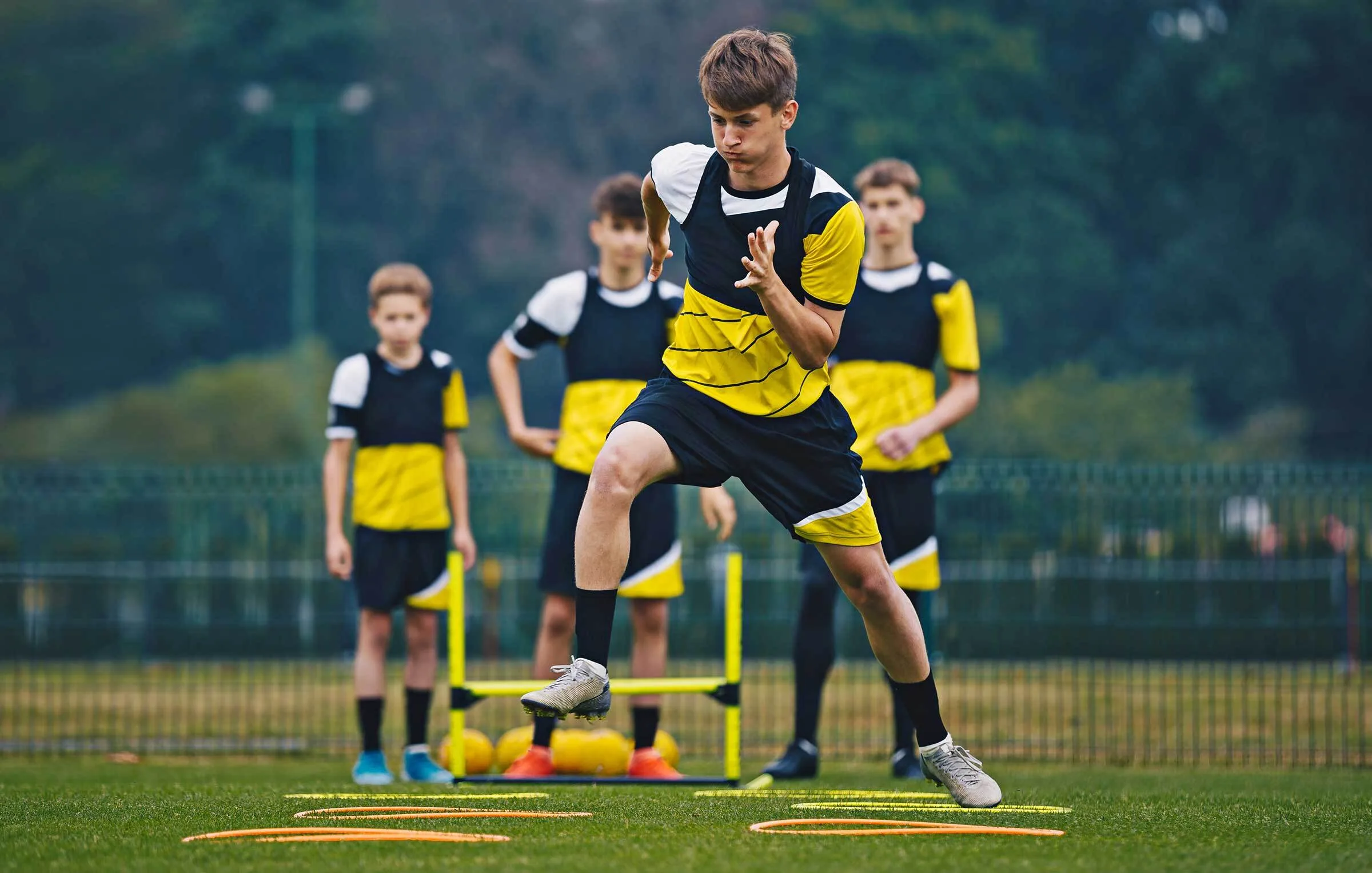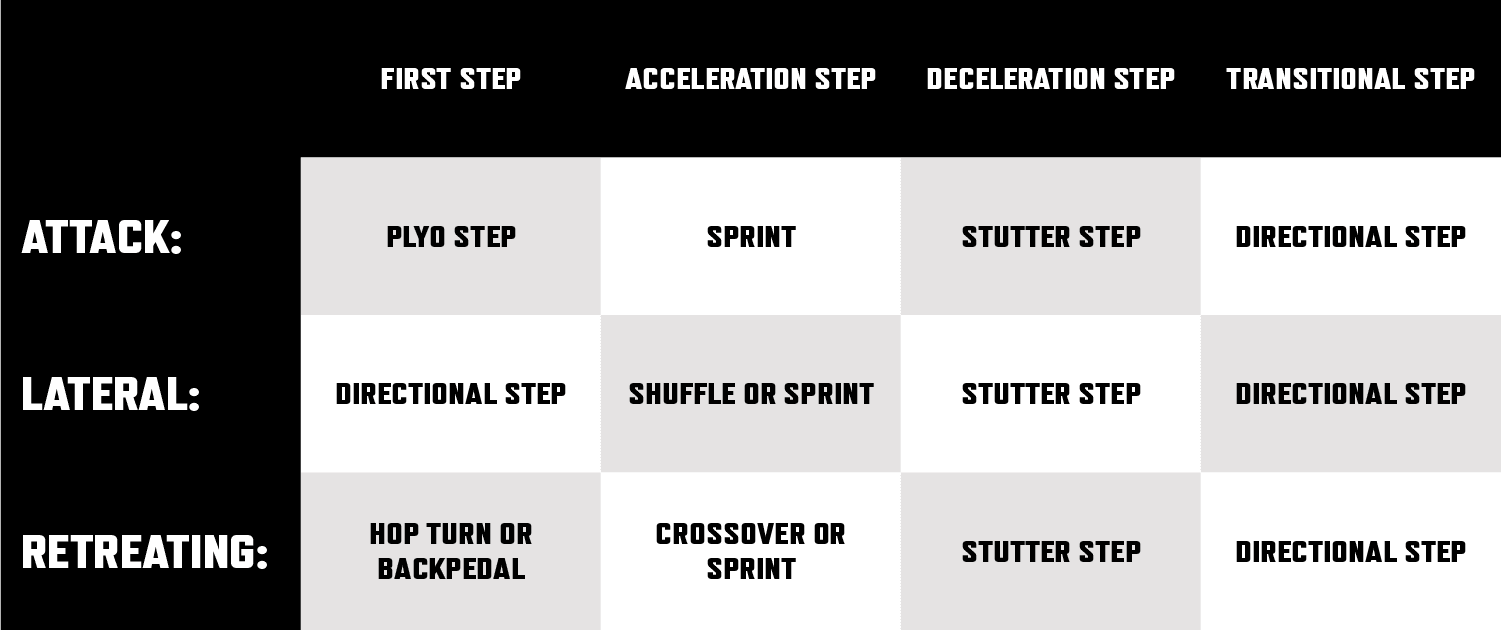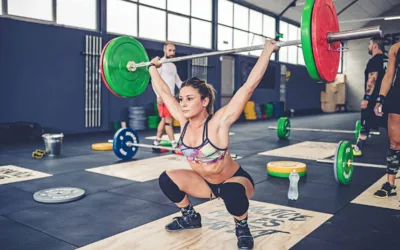System Based Agility Training

How do you approach training agility in a more holistic way? Agility is an important element of athletic success — being agile means more wins in your sport and fewer injuries on the field. Whether you’re programming for yourself or your competitive athletes, take a closer look at how you do agility training in this blog.
Travis Hansen has been involved in the field of Human Performance Enhancement for nearly a decade. He graduated with a Bachelor’s degree in Fitness and Wellness, and holds 3 different training certifications from the ISSA, NASM, and NCSF. He is currently the Director of The Reno Speed School inside the South Reno Athletic Club. He has worked with hundreds of athletes from almost all sports, ranging from the youth to professional ranks.
Travis hansen


Change the Way You Train
Taking a Systematic Approach to Agility Training
The word “system” is what is especially important in the title above.
For as long as I’m sure you can remember agility training has been treated as a method of training involving an endless array of cone drills, with perceived fancy footwork to capture the eyes and imagination of whomever is watching. But at what point do we step back and analyze whether or not our current approach is actually benefiting and improving an athlete’s change of direction ability.
More importantly, are the patterns and drills being practiced actually helping to prepare the athlete, regardless of sport for the demands he or she will face when the time comes, so that they are less likely to get injured and in the best position to excel.
I think the industry, myself included, has failed in the proper physical preparation of an athlete’s agility skill since there hasn’t been an actual progressive training system that has been promoted that covers all elements of agility and one that can accommodate anyone on the athletic training spectrum.
Lets first discuss the two primary types of agility training and then go from there.
Two Types of Agility Training
#1 Rehearsed Agility Training
Also referred to as “Closed Loop” agility training involves predictable patterns of movement that athletes have to follow with the objective of teaching proper cutting and change of direction techniques to help build coordination and awareness of the body in space before more advanced methods are employed (i.e. pro agility 5-10-5 shuttle run).
#2 Reactive Agility Training
Is a more game and sport specific approach to agility training that involves an “Open Loop” and unpredictable training environment where the athlete is expected to perform spur of the moment action through quick decision making much like in sport (i.e. mirror drill).
I imagine most are familiar with the two types of agility training above, and usually the bus stops here.
Coaches and trainers will program various techniques that fall into either one of these two categories. But when you really take a step back to see what is occurring in motion during sport there are an additional three types of agility training that needs to be practiced which can fall into either one of the two categories above.
#1 Attack Based Agility
Involves motion moving forward and different potential angles to attack an object (i.e. endzone, goal, or opponent) and can be either offensive or defensive based.
Sport Examples:
- Soccer or Basketball Player zig sagging back and forth as they dribble the ball up the court
- Lacrosse or Hockey player trying to skate past a retreating defender towards the goal
- A wide receiver or tight end running a skinny post towards the endzone
#2 Retreating Based Agility
Involves motion occurring backwards and at potentially different angles to generally track down an object or an opponent.
Sport Examples:
- An outfielder turning around to track down a fly ball hit towards the wall
- Baseball/soccer/lacrosse/hockey defender trying to stay in front of an opponent in the open field or court
- A football defensive back trying to cover a wide receiver or tight end downfield
#3 Lateral Based Agility
A side to side motion to defend an opponent or draw an opponent out of position to attack and make a play.
Sport Examples:
- A base runner taking a quick directional step and attempting to steal a base
- A basketball player shuffling to get in front of oncoming player to take a charge
- A football lineman trying to over a rushing defensive end
- A tennis player taking lateral steps and loading the body before make a powerful hit
The Next Steps
I’m sure you could conjure up more examples like the ones above, but what’s important here is that you’ll notice a majority if not all of the change of direction and agility moves fall within these three categories in either a rehearsed and scripted environment, or in a more spontaneous and open reactive based training setting.
From here, you can break down the drills above into specific elements or features.
It’s important to note that these sequences happen pretty naturally and the information is more for awareness and appreciation of the specific steps which can then be broken down into other drills.
The checklist is important for drill qualification purposes and to encourage sport movement specificity.
Agility Movement and Step Sequences

Here are a few videos for each type of agility drill that represent the sequences above that you can use with your athletes right away week in and week out to refine and optimize agility training capacity! Keep in mind that oftentimes sport movement situations involve a combination of each of these three in some shape or form.
You’ll see attack-laterals and vice versa, and attack-retreats and so on and so forth.
For more, be sure to check out The Truth About Speed & Agility Training.
Attack:
Lateral:
Retreating:
Find Your Perfect Training Plan
Sometimes all you need to reach your destination on your fitness journey is an expert guide. We've got you covered. Browse from thousands of programs for any goal and every type of athlete.
Try any programming subscription free for 7 days!
Related articles
3 Ways to Improve Mobility Without Stretching
Are you still trying the endless foam rolling and stretching exercises to get that deep squat position? We know how important mobility is for great, or even GOOD performance. All professional athletes have some comfortability in end ranges of motion. So, what else do...
The Ultimate Guide to Lunges: Queen of all Glute Exercises
Your glutes are the largest muscle group in your body. They’re responsible for almost everything your legs do—walking, running, jumping, squatting, lunging, and just standing upright. As far as moving through space goes, strong glutes are the bedrock of overall...
A Beginner’s Guide to Steel Mace Training
Author: Jesse Grund
Mace training will make you a better mover without it’s not confining you to a fixed space or predetermined range of motion. Second, it’s an offset load with 80 to 90 percent of the weight in the head. You’re also constantly having to resist rotation, which creates greater core engagement.

Join the community
Sign up for the latest training news and updates from TrainHeroic
Made with love, sweat, protein isolate and hard work in Denver, CO
© 2023 TrainHeroic, Inc. All rights reserved.





